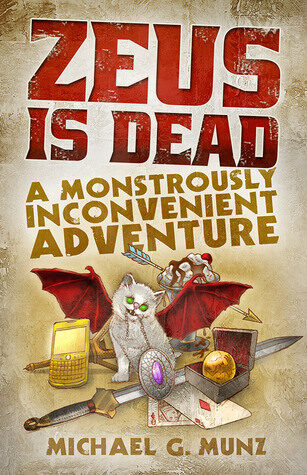What Makes a Good Children’s Book?
By Carol Williams
When it comes to children’s books and their quality, it seems to be a rather simple matter. A catchy title, host of attractive characters and interesting story should be enough, right? That’s just plain wrong. Great children’s books are often timeless and enjoyed by generations of children. What are the key qualities that make up for a good children’s book. Here are 7 key characteristics of great children’s literature that captivates the minds of children and adults alike.
A story that teaches
Stories which children find most engaging usually offer a deeper insight, not just the surface narrative. Great children’s books teach simple concepts – it can be colors, numbers or letters. They also capture more abstract concepts like friendship, diversity, open-mindedness and forgiveness.
In telling their stories, great children’s books are exceptionally authentic and credible. They’ve got layers and depth to them that makes uncovering each more exciting and captivating to young minds. They offer value on each reading and remain rewarding for a long time.
Great illustrations
Exceptional children’s books can tell their story through imagery just as well as through words. They expand minds, teach children new vocabulary or help them understand complex concepts by combining persuasive descriptions with captivating artwork. Concept books are among my favorite here – they offer opportunities to see language as play and help children grow accustomed to more advanced vocabulary without being overly ‘preachy’.
A selection of strong characters
A good children’s books cannot lack interesting characters that captivate young minds and motivate them to follow the story no matter what. By giving a character children care about, you can be sure that your book will easily evoke emotional responses. Think Winnie the Pooh, The Velveteen Rabbit or Harry Potter for older children. They’re all characters who we wanted to follow and were emotionally invested in what happened to them. Naturally, this tendency extends to adult books as well.
It’s relatively hard to write an engaging children’s book without at least one character that is bound to be remembered. But if you plan to write a book without characters, you should make sure that the language itself allows to connect on an emotional level with the story. It takes a certain mastery to get there, but it’s absolutely within your reach.
Originality in presentation
This is a more abstract quality that I think makes children’s book really memorable. It’s clear that there’s a fine line between presentation that is original and overdone. With themes done to death (think Christmas), it’s very difficult to find new ways of telling such old stories. Stories that are challenging to the traditional ways of telling their genre are what I find really original.
Books which offer different narrative structures, feature subversive humor or are simply creations of that unique poetic beauty – all these boast original presentation. Sometimes the most original children books are born out of stories for adults, adapted to fit the new context.
Strong Characters? Originality? I think this Seuss Dude Figured it out
High-quality writing
I find it really unbelievable how bad the writing in children’s books can be. Just like adults, children know how to appreciate linguistic mastery and just because they’re not experienced readers doesn’t meant that their first books ought to be deficient.
Good literature can be about simple things and telling simple stories. It doesn’t need to be sophisticated and boring. In fact, it’s true that children appreciate books that offer an intellectual challenge and are prepared to deal with descriptions of darker sides of childhood.
As long as writers are sensitive to the subject matter and ready to take that risk, I think they stand a chance at creating books that are truly moving. Fine writing and a respectful treatment of a difficult topic are the best combination for a valuable children’s literature.
Age appropriateness
This is an important feature that applies to many things, such as the book’s topic, presentation and manner of telling. If you’d like to write a children’s book, you need to consider the identity of your target audience. Will illustrations be appropriate for children of that age. Is the text simple enough? Is the child your first reader in mind, or is it an adult?
Needless to say, children’s books should be primarily for children first, but it’s not bad it they’re also entertaining to adults (after all, it’s them who will be reading the text over and over again). Still, consider how publishers often print a special age guide on the book cover and where your book might end up in largest bookshops. Have a look there to see how books are classified to gain a better idea of your target audience.
A lack of ‘preachiness’
This is key for any book that has a certain message. Young readers should be respected. That’s why you need to allow enough flexibility in your book to help children make up their own minds about its central issues. Don’t strive to provide them with one correct answer. Offer a problem and several solutions. Otherwise, you’re not doing anything other than brainwashing.
And that’s something that will never add value to your work. Mind you, this point isn’t about spirituality in children’s literature – this is a far more complex and entirely personal topic. But ‘preachiness’ can come in many forms and it’s your job as a children’s book author to avoid it and offer knowledge and insight in a digestible manner.
When you look at today’s children’s book racks, you’ll most likely see works that are spin-offs from TV shows, toys and children movies. This isn’t to say that these works are worthless. But most of them are poorly written and offer relatively low quality insight.
The best children’s books are the ones which instantly capture children’s imagination and allow them to explore the narrative reality without setting any boundaries or offering ready-made solutions.
About the author:
Carol Williams is a working mom and a former teacher employed by checkdirector.co.uk – a free company director check platform. She is a great fan of reading and writing and tries to inculcate those passions in her children.
Views: 293




Mary
Love your blog. My kids favorite two books at the moment are “Finding Winnie” and Cooking With Mr. C.” Have you reviewed them? We love them Thanks. Mary
Dick Leonardo
Glad you like bookroomreviews and no we have not reviewed Finding Winnie or Cooking With Mr. C.I’ll have to check them out
Michael Mardel
I know all the right ways to write for children, but it’s good to read about it. I’ll be checking out the book.
Annaevie
Really appreciate your article and happy to read about childeren.